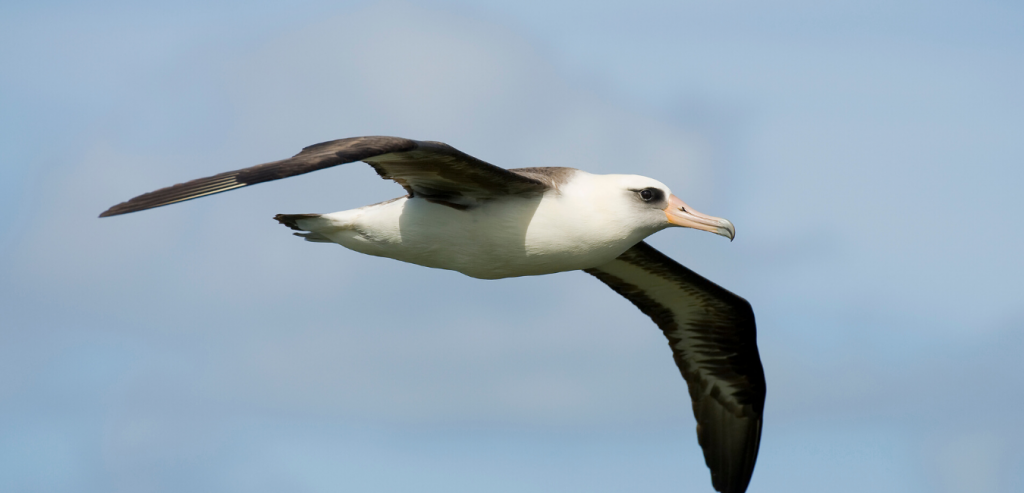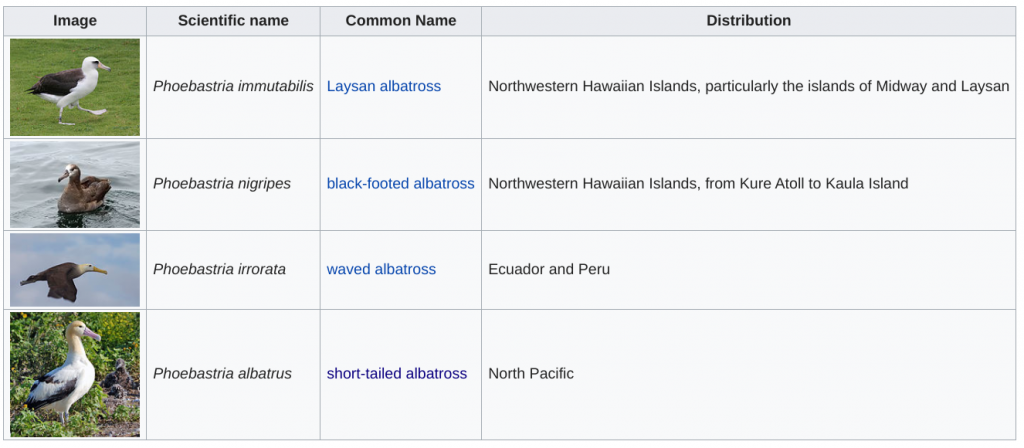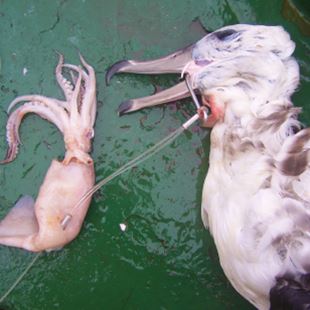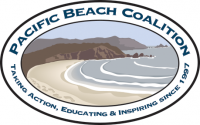Albatross

Albatross PBC’s Earth Hero Honoree 2020-2021
The North Pacific albatrosses are large seabirds from the genus Phoebastria in the albatross family. They are the most tropical of the albatrosses, with two species (the Laysan and black-footed albatrosses) nesting in the Northwestern Hawaiian Islands, one on sub-tropical islands south of Japan (the short-tailed albatross), and one nesting on the equator (the waved albatross).
When roosting, they choose isolated sites and lay one egg, with both parents incubating and raising the chick. They are monogamous species, and they don’t start breeding until they are 5–15 years old.
The feeding habits of these albatrosses are similar to other albatrosses in that they eat fish, squid, crustacea, and carrion.

Read fun facts about the Northern Pacific Albatross
The Short-Tailed Albatross
Short-tailed albatrosses now nest on four islands, with the majority of birds nesting on Torishima, and almost all of the rest on Minami-kojima in the Senkaku Islands. A female-female pair began nesting on Kure in the late 2000s, but to date they have not produced a viable egg. A chick hatched on 14 January 2011 on Midway. Both Midway and Kure are in the Northwestern Hawaiian Islands. In 2012 a pair began incubating an egg on Muko-jima, in the Bonin Islands, Japan. During non-breeding season they range across the North Pacific, with the males and juveniles gathering in the Bering Sea, and the females feeding off the coast of Japan and eastern Russia. They can also be found as far east as California. In fact, the short-tailed albatross is seen on a number of the United States’ state endangered species lists including Washington.
The Laysan Albatross
The Laysan albatross (Phoebastria immutabilis) is a large seabird that ranges across the North Pacific. The Northwestern Hawaiian Islands are home to 99.7% of the population. This small (for its family) gull-like albatross is the second-most common seabird in the Hawaiian Islands, with an estimated population of 2.5 million birds, and is currently expanding (or possibly re-expanding) its range to new islands. The Laysan albatross was first described as Diomedea immutabilis by Lionel Walter Rothschild, in 1893, on the basis of a specimen from Laysan Island.
The Laysan albatross is usually easy to identify. In the North Pacific, it is simple to separate from the other relatively common albatross, the all black black-footed albatross. It can be distinguished from the very rare short-tailed albatross by its all-dark back and smaller size. The Laysan albatross’s plumage has been compared to that of a gull, two-toned with a dark gray mantle and wings and a white underside and head.
A female Laysan albatross named Wisdom is the oldest known wild bird in the United States or the Northern Hemisphere. Wisdom was banded by a U.S. Geological Survey researcher in 1956, and in December 2016, she was seen rearing a new chick on Midway Atoll. Because Laysan albatrosses cannot breed until they are 5 years old, as of 2016, Wisdom was estimated to be at least 66 years old.
The Black-Footed Albatross
The black-footed albatross (Phoebastria nigripes) is a large seabird of the albatross family Diomedeidae from the North Pacific. All but 2.5% of the population is found among the Northwestern Hawaiian Islands. It is one of three species of albatross that range in the northern hemisphere, nesting on isolated tropical islands. Unlike many albatrosses, it is dark plumaged.
All adults have white markings around the base of the beak and below the eye. As the birds age they acquire more white at the base of the beak. Its beak and feet are also all dark. They have only the one plumage.
The black-footed albatross feeds in pelagic waters, taking the eggs of flying fish, squid and to a lesser extent crustaceans. It will also consume floating debris, including plastics.
The Threats
The Short-Tailed Albatross Almost Made it on the Extinction List
The short-tailed albatross came perilously close to extinction. They were hunted on an almost industrial scale for their feathers in the later half of the 19th century, with some estimates claiming upward of 10 million birds hunted. By the 1930s the only population left was on Torishima, between 1927 and until 1933 hunting continued when the Japanese government declared the ban of hunting to save the species, after which the albatrosses stopped breeding on the island. At this point the species was assumed to be extinct and research became impossible with the outbreak of World War II. On 1949 an American researcher arriving on this island declared the species to be extinct, but an estimated 50 individuals, most likely juveniles, survived at sea (all albatross species take a long time to reach sexual maturity and will not return to their natal colony for many years). After the return of the birds they were more carefully protected, and the first egg was laid by the returning birds in 1954. Varieties of albatross decoys were placed around on the island after it was discovered that like other albatross species, this species also were enticed to breed if placed in a group.

There are many measures underway to protect this species. Japan, Canada, and the United States list this bird as a protected species. Tori-shima is a National Wildlife Protection Area, and native plant species are being transplanted to assist in nesting.
Today, longline fisheries, and volcanic eruptions on Tori-shima are the largest threats; however, introduced predators, environmental contaminants, soil instability, and extreme weather are also threats.
The Black-Footed Albatross Threatened by Longine Fishing
The black-footed albatross is considered near threatened by the IUCN, because it is taken incidentally by longline fishing. An estimated 4,000 are taken every year, based on the number taken in 1990; other estimates put the number at 8,000, although more recent numbers are at around 6,150 per year with the majority of deaths from Taiwanese and Japanese fishing fleets. It is also vulnerable to oil and ingestion of floating plastics, which reduces the space in the stomach available for food to be brought to the chick. Finally volcanic eruptions on Torishima continues to be a threat.
The Laysan Albatross Trying to Survive Despite the Plastic Pollution
The Laysan albatross, while a common species is on the vulnerable list, because it has not yet recovered from the wide-scale hunting of the early 1900s, with feather hunters killing many hundreds of thousands and wiping them out from Wake Island and Johnston Atoll. This slaughter led to efforts to protect the species (and others) which led eventually to the protection of the Northwestern Hawaiian Islands. Feral cats are known to prey on nesting birds and chicks on some of the more newly colonized islands. In some places, big headed ants are a threat to young albatross chicks. The species is still vulnerable to longline fisheries and the ingestion of floating plastics due to high rates of plastic pollution.
Sources: North Pacific Albatross, Laysan Albatross, Black Footed Albatross
